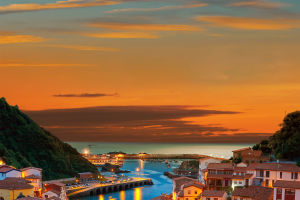Holland, a region in the Netherlands, is famous for its picturesque landscapes, colorful tulip fields, and iconic windmills.
The combination of tulips and windmills has become a symbol of Dutch culture and a popular tourist attraction. The introduction of tulips and windmills in Holland has a long and fascinating history that has shaped the region's identity and economy.
Tulips were first introduced to Holland in the late 16th century when Carolus Clusius, a botanist, brought the bulbs from Türkiye.
The exotic flowers quickly captured the imagination of the Dutch people and became a status symbol among the wealthy.
The demand for tulips grew, and by the 17th century, tulip bulbs were being traded as a commodity on the Amsterdam stock exchange.
The tulip trade became so lucrative that it sparked a speculative frenzy known as Tulip Mania, which eventually led to a financial crash. Despite this setback, tulips remained an important part of Dutch culture and economy.
Today, Holland is the world's leading producer of tulips, with over three billion bulbs exported annually. The fields of vibrant tulips that bloom in the spring attract tourists from all over the world.
The Keukenhof Gardens, located in Lisse, is one of the most famous destinations in Holland for tulip lovers. The park, which covers over 32 hectares, is home to more than seven million flowers, including over 800 varieties of tulips.
Windmills, on the other hand, have been a part of Dutch culture for centuries. The first windmills were built in the Netherlands in the 13th century and were used for a variety of purposes, including grinding grain, sawing wood, and pumping water.
Over time, windmills became an integral part of Dutch life, and by the 19th century, there were over 10,000 windmills in the Netherlands.
Today, windmills are still an important part of Dutch life, although their functions have changed. Many windmills have been converted into museums or used for recreational purposes, such as sightseeing tours.
The Kinderdijk Windmill Complex, located in the south of Holland, is a UNESCO World Heritage site and one of the most popular destinations for tourists.
The complex consists of 19 windmills that were built in the 18th century to pump water from the polder, a low-lying area of land that is prone to flooding.
The introduction of tulips and windmills in Holland has had a significant impact on the region's economy and culture.
The cultivation of tulips has become a multi-billion dollar industry, and the fields of colorful flowers are a major draw for tourists.
Windmills, once an essential part of Dutch life, has also become a popular tourist attraction, with many visitors coming to see the iconic structures and learn about their history.
The combination of tulips and windmills has become a symbol of Dutch culture, and the two have been featured in countless works of art and literature. The vibrant colors of the tulips and the graceful movement of the windmills have inspired artists for centuries.
The Dutch painter Vincent van Gogh famously painted a series of works featuring windmills, and the Dutch writer Cees Nooteboom has written extensively about tulips and their place in Dutch culture.
The combination of tulips and windmills has become a part of Dutch identity and a reminder of the region's rich history and heritage.


